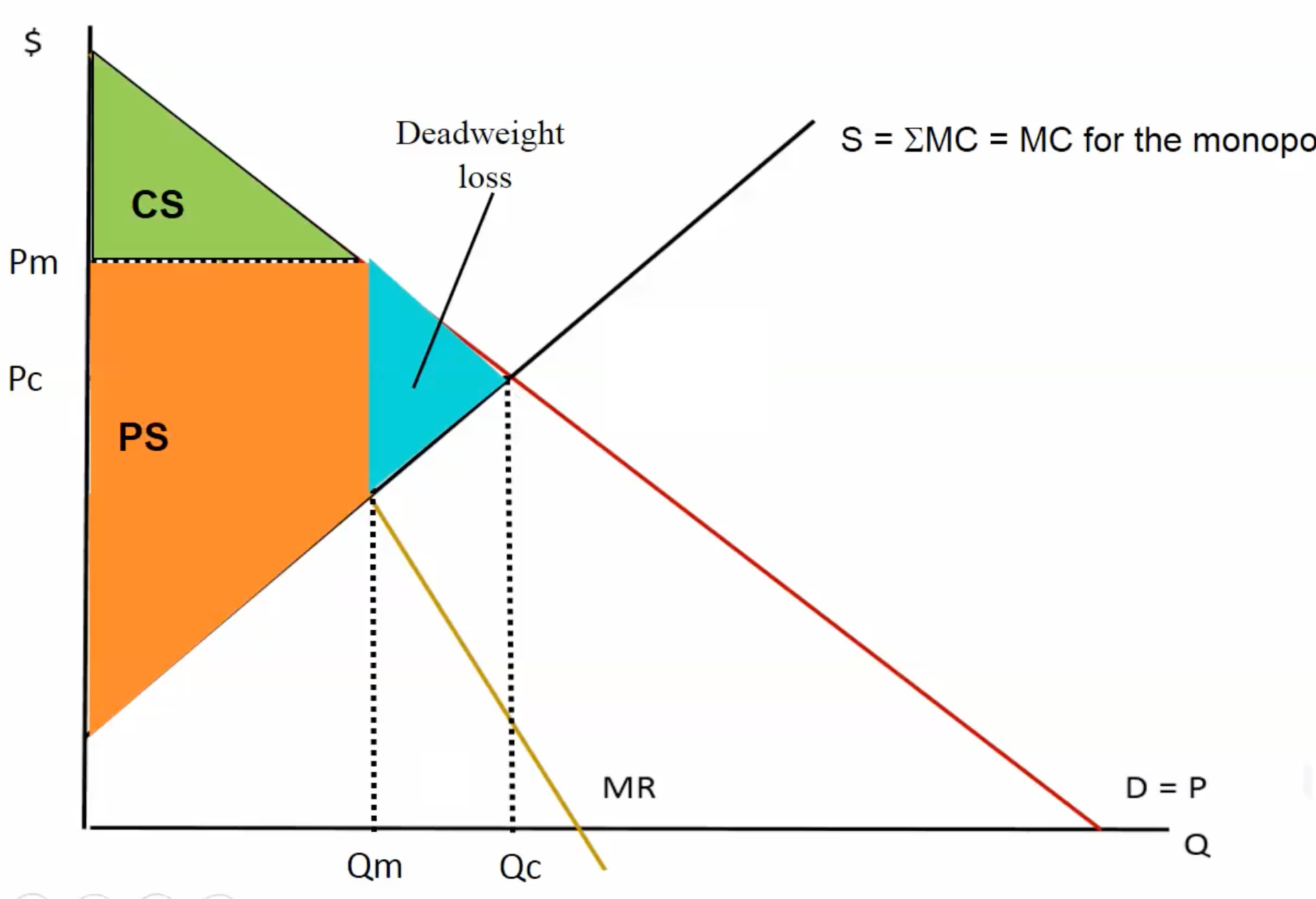Unit 9
| Word | Meaning |
|---|---|
| monopoly | - one seller of a product - its product does not have close substitutes - the firm is a price setter |
The monopoly's demand curve is the market demand curve (unlike in perfectly competitive market where the demand curve of a firm is perfectly elastic)
The monopoly's MR = MC, MR < P, MC < P

Barriers to Entry for Monopoly¶
- A single firm owns a key resource that no other firm can access or has a close substitude for
- The government gives one firm the exlusive right to produce and sell some good
- Patents and copyrights
- Gov can give a firm sole rights to sell in a particular market
- Natual monopoly
- One firm can supply the entire market at a lower cost that two or more firms
- Arises when there are increasing returns to scale (the firm operates on the downward sloping part of its ATC)
- Monopoly by good management
- Some firms conduct their affairs with the aim of keeping out/driving out competition
| Competitive equilibrium | Monopoly |
|---|---|
| P = MC | MR = MC P > MC |
 |
Public Polcy Towards Monopoly¶
-
Competition Law
-
Legistation to prevent mergers that would make the market less competitive
-
Canada has the competition act
-
Regulation
-
Regulate the price that a monopoly may charge (often set P = ATC)

-
Public ownership
-
The government can run the monopoly itself, called crown corporations (canada post, CBC)
-
May not run efficiently because the government may not care about costs as much as private owners
-
Do nothing
-
If the inefficiency is small, the government may stay out of it
- May be political reasons
Price Discrimination¶
The busniness practice of selling the same good to different people for different prices. In order to price discriminate, the firm must have some market power and be able to segment the market according to consumers' willingness-to-pay
- Perfect price discrimination (first degree price discrimination): If the monopolist knows exactly the willingness-to-pay of each customer, it can charge each customer a different price
- Hard to do in practice
- If every customer pays the monopolist a price equal to their willingness-to-pay, the customer does not enjoy any benefits - no consumer surplus
- The firm will sell the quantity that would be traded in a competive equilibrium
- No dead weight, all surplus belong to the firm
- Ordinary price discrimination (third degree price discrimination): the firm charge different prices in each market
- Easier to do in practice
- Higher price in the market segment with more inelastic demand
The monopolist does not have a supply curve
Created: November 15, 2021